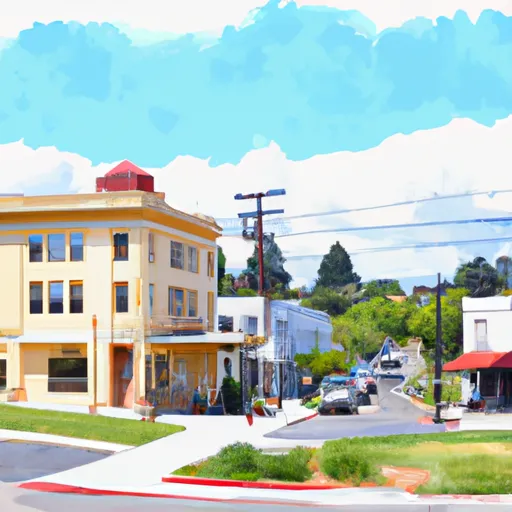-
 Snoflo Premium
Snoflo Premium
Get unlimited access to all our content
With no Ad interruptions! - Start Your Free Trial Login with existing account
Madison
Eden Index
Climate
9.4
•
Recreation
2.5
•
Community
1.6
•
Safeguard
5.0/10

Madison, California is a picturesque town located in Yolo County, with a population of approximately 5,000 residents. The area experiences a Mediterranean climate, characterized by hot, dry summers and mild, wet winters. Summers in Madison are typically sunny, with temperatures averaging around 90°F (32°C), while winters are cool, with temperatures hovering around 55°F (13°C).
The town is situated near the Cache Creek, a vital hydrological feature in the region. The creek serves as a vital water source and supports a diverse range of flora and fauna. The hydrology constituents of Madison also include nearby lakes and reservoirs, such as Clear Lake and Indian Valley Reservoir, which offer opportunities for boating, fishing, and water-based recreational activities.
Outdoor enthusiasts will find a myriad of recreational opportunities in Madison. The surrounding region is ideal for hiking, with scenic trails like the Cache Creek Ridge Trail and Capay Open Space Park providing breathtaking views of the landscape. Additionally, the Cache Creek Natural Area offers opportunities for camping, wildlife viewing, and horseback riding, making it a popular destination for nature lovers.
In summary, Madison, California offers a pleasant Mediterranean climate, with hot summers and mild winters. Its hydrology constituents, including the Cache Creek and nearby lakes, provide ample opportunities for water-based activities. Outdoor enthusiasts can explore scenic trails, camp, and partake in various recreational activities in the surrounding natural areas.
What is the Eden Index?
The Snoflo Eden Index serves as a comprehensive rating system for regions, evaluating their desirability through a holistic assessment of climate health, outdoor recreation opportunities, and natural disaster risk, acknowledging the profound impact of these factors on livability and well-being.
Climate Health Indicator (CHI): 9.4
Madison receives approximately
571mm of rain per year,
with humidity levels near 78%
and air temperatures averaging around
17°C.
Madison has a plant hardyness factor of
9, meaning
plants and agriculture in this region tend to thrive here all year round.
By considering the ideal temperature range, reliable water supplies, clean air, and stable seasonal rain or snowpacks, the Climate Health Indicator (CHI) underscores the significance of a healthy climate as the foundation for quality living.
A healthy climate is paramount for ensuring a high quality of life and livability in a region, fostering both physical well-being and environmental harmony. This can be characterized by ideal temperatures, reliable access to water supplies, clean air, and consistent seasonal rain or snowpacks.
Weather Forecast
Streamflow Conditions
Lower Sacramento
Area Rivers
Lower Sacramento
Snowpack Depths
Lower Sacramento
Reservoir Storage Capacity
Lower Sacramento
Groundwater Levels
Recreational Opportunity Index (ROI): 2.5
The Recreational Opportunity Index (ROI) recognizes the value of outdoor recreational options, such as parks, hiking trails, camping sites, and fishing spots, while acknowledging that climate plays a pivotal role in ensuring the comfort and consistency of these experiences.
Access to outdoor recreational opportunities, encompassing activities such as parks, hiking, camping, and fishing, is crucial for overall well-being, and the climate plays a pivotal role in enabling and enhancing these experiences, ensuring that individuals can engage in nature-based activities comfortably and consistently.
Camping Areas
| Campground | Campsites | Reservations | Toilets | Showers | Elevation |
|---|---|---|---|---|---|
| Travis AFB Military | None | 73 ft | |||
| Lake Solano County Park | None | 134 ft | |||
| Yolo County Fair RV | None | 62 ft |
Catastrophe Safeguard Index (CSI):
The Catastrophe Safeguard Index (CSI) recognizes that natural disaster risk, encompassing floods, fires, hurricanes, and tornadoes, can drastically affect safety and the overall appeal of an area.
The level of natural disaster risk in a region significantly affects safety and the overall livability, with climate change amplifying these risks by potentially increasing the frequency and intensity of events like floods, fires, hurricanes, and tornadoes, thereby posing substantial challenges to community resilience and well-being.
Community Resilience Indicator (CRI): 1.6
The Community Resilience Indicator (CRI) recognizes that education, healthcare, and socioeconomics are crucial to the well-being of a region. The CRI acknowledges the profound impact of these elements on residents' overall quality of life. By evaluating educational resources, healthcare accessibility, and economic inclusivity, the index captures the essential aspects that contribute to a thriving community, fostering resident satisfaction, equity, and social cohesion.

